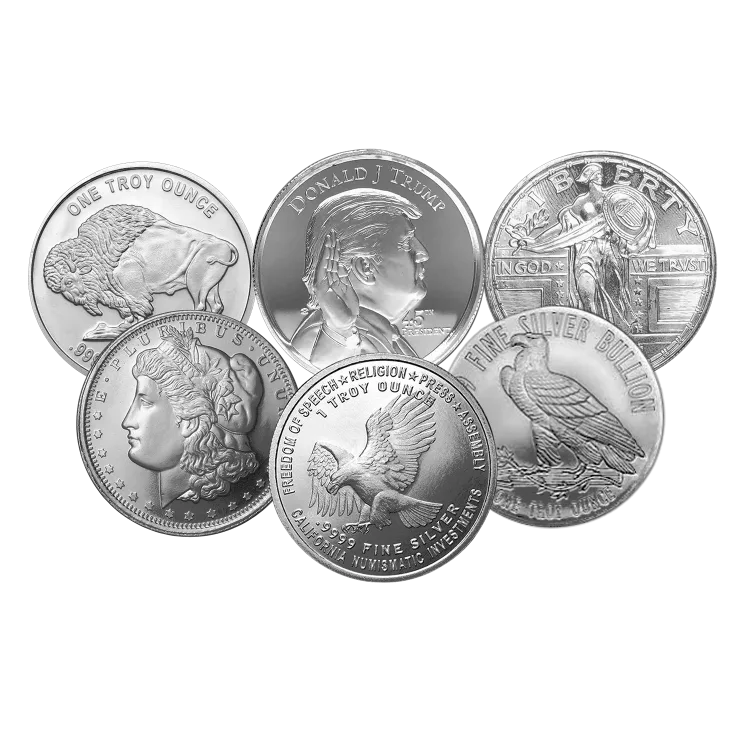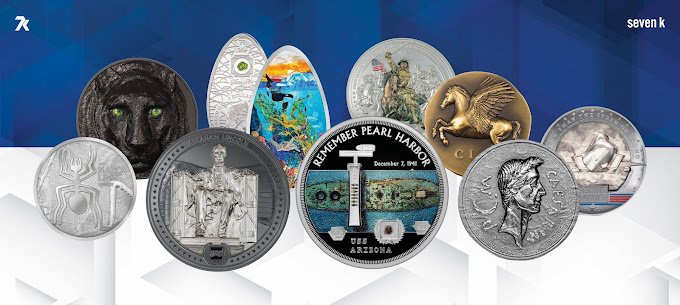In today’s unpredictable financial landscape, ensuring long-term financial security is a top priority for individuals looking to protect their wealth and build lasting prosperity. While traditional investments like stocks, bonds, and real estate are common choices, they often come with their own set of risks and market fluctuations. Precious metals, such as gold, silver, and platinum, have historically been reliable stores of value that offer a unique and secure path to safeguarding wealth over time. But why exactly are precious metals considered the key to long-term financial security? Let’s dive into the compelling reasons why investing in precious metals is a wise decision for anyone serious about securing their financial future.
1. Proven Hedge Against Inflation
One of the most significant benefits of precious metals, especially gold and silver, is their ability to act as a hedge against inflation. As inflation rises, the purchasing power of traditional currencies, like the U.S. dollar, decreases. However, precious metals have historically maintained their value, and in many cases, even increased in price when inflation is high.
Unlike paper currency, which can be printed in infinite amounts, precious metals have a finite supply—meaning they cannot be devalued by governments printing more money. This is why, during periods of inflation, the value of gold and silver tends to rise, providing investors with a stable store of wealth. For anyone looking to protect their purchasing power and preserve their wealth, investing in precious metals is a smart strategy.
2. Safe Haven During Economic Uncertainty
Throughout history, precious metals have been viewed as a safe haven asset. During times of economic instability—such as financial crises, recessions, or geopolitical tensions—investors often flock to gold and silver to preserve their wealth. In fact, gold has earned the reputation of being a “crisis commodity” because of its ability to retain value during turbulent times.
When stock markets are volatile or when the value of the national currency drops, precious metals tend to hold steady or increase in value. As a result, precious metals are widely regarded as one of the safest places to park wealth when the global economy is in turmoil. For long-term financial security, precious metals provide an insurance policy against the unpredictable nature of the market.
3. Diversification of Your Investment Portfolio
An essential principle of investing is diversification—spreading your investments across different asset classes to reduce risk and enhance returns. While stocks, bonds, and real estate have traditionally been the main components of an investment portfolio, adding precious metals can offer significant diversification benefits.
Unlike stocks and bonds, which can be volatile and influenced by market conditions, precious metals are tangible, physical assets with intrinsic value. Gold, silver, and other metals are not tied to the performance of financial markets or economies, making them an ideal asset class for hedging against market downturns. By including precious metals in your portfolio, you can reduce overall portfolio risk and help ensure long-term financial stability.
4. Long-Term Value Retention
Precious metals have a proven track record of maintaining their value over time. Unlike paper assets, which can lose value through inflation, corporate bankruptcy, or economic upheaval, gold and silver are assets that are virtually impervious to such risks. Gold, in particular, has been a store of value for thousands of years, surviving numerous financial crises, wars, and currency devaluations.
For example, the price of gold has consistently risen over the long term, even during times of economic downturn. Silver has also shown similar growth, albeit with more price volatility. Investing in precious metals, therefore, offers long-term value retention that is unrivaled by other types of assets. This makes them an ideal investment for building wealth and securing financial independence.

5. Limited Supply and Growing Demand
Another important factor that drives the value of precious metals is their limited supply. Gold and silver are finite resources, and once they are mined, they cannot be replenished. This scarcity ensures that, as demand increases, the value of these metals tends to rise over time. The global demand for gold and silver comes from a variety of sources, including jewelry, industrial uses, technology, and central bank reserves.
In particular, silver is seeing growing demand due to its use in renewable energy technologies, electronics, and electric vehicles. As technology continues to evolve and global economies shift toward sustainable energy, demand for precious metals is expected to rise, further driving up their value. This limited supply combined with growing demand positions precious metals as a lucrative long-term investment.
6. Tax Advantages and Wealth Preservation
In many countries, precious metals are taxed at lower rates than traditional investment options like stocks and bonds. For example, in the U.S., gold and silver are often taxed as collectibles, which can result in lower capital gains tax rates compared to other investments. Additionally, physical precious metals are typically not subject to the same types of volatility and taxation schemes as other investments, making them an attractive option for wealth preservation.
By investing in precious metals, you can keep your wealth secure from fluctuating tax rates and preserve its value for future generations. This is especially important for those looking to build a legacy and pass down wealth to their heirs. Precious metals provide an effective tool for transferring wealth across generations while protecting it from erosion through inflation or excessive taxation.
7. Accessibility and Liquidity
Precious metals are highly liquid, meaning they can be easily bought, sold, or traded at any time. Gold, silver, and other precious metals are recognized worldwide, and their value is universally accepted. This accessibility makes precious metals a practical investment for those seeking both security and the ability to convert their assets into cash when needed.
Whether you are looking to sell your precious metals in the future, use them as collateral for loans, or simply exchange them for cash, precious metals are one of the most flexible assets available. Their high liquidity makes them a valuable tool for individuals who need to access their wealth at any point in time, providing both long-term security and short-term flexibility.

Conclusion: Precious Metals for Long-Term Financial Security
In a world where economic uncertainty is a constant, investing in precious metals provides a stable, reliable, and tangible way to secure your financial future. Gold, silver, and other metals offer protection against inflation, economic downturns, and market volatility, ensuring that your wealth retains its value over time.
By incorporating precious metals into your investment strategy, you can diversify your portfolio, protect your purchasing power, and build long-term wealth that stands the test of time. With their proven track record, limited supply, and growing demand, precious metals truly are the key to long-term financial security.
Start investing in gold and silver today to safeguard your financial future and ensure lasting wealth.
7k Metals Explained: How to Build Wealth with Gold and Silver